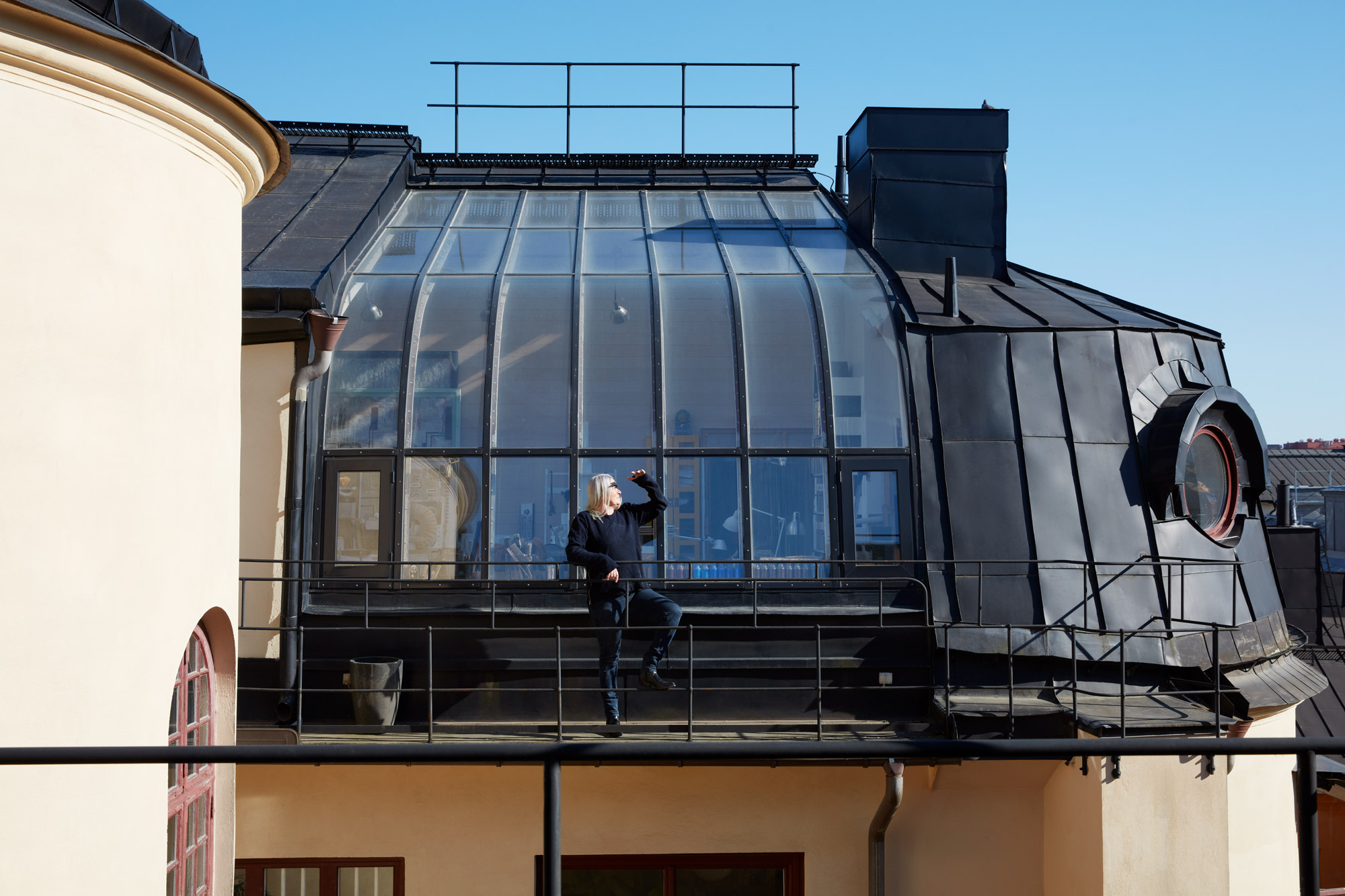Artist Caroushka Streifert on turning a home into a factory
ARTIST CAROUSHKA STREIFERT ON
TURNING A HOME INTO A FACTORY
INTERVIEW

“I have a fascination for construction, how things are supported, where bolts are located. When others look in shop windows, I look at downpipes,” says artist and interior architect Caroushka Streifert. ”My father was an architect. I can’t sing, read notes or play instruments, but I could read drawings before I could read letters.”
Tucked in between the rooftops on Södermalm in central Stockholm, Caroushkas live and work space at the top floor has large bent windows facing the sky and a balcony with views over the rooftops. Everything is open, there are no doors or enclosed spaces and her artwork is present in most spaces; collages, illustrations, objects and handmade boxes containing more objects. Her works are made from things she has found on the streets of Stockholm, Paris and New York, or in the nature surrounding her summer island in the Swedish archipelago; be it sticks, animal skulls, old tickets or pieces of metal.
She calls her studio her ‘small factory’, with a nod to industrial mass production. “We just produce more and more stuff, to no use. Consumption has gone out of hand.” Her work is a comment on the abundance of objects and consumption, and quantity and volume plays an important part. One stick is never enough, it must be 3,000 sticks for it to count. “Anyone can make one stick, but not many people can handle 4,000.” she says. Carouschka started out as an interior architect in the 1970s and worked for several architecture offices until she launched her own business in 1978. The majority of her commissions are conversions of industrial loft spaces, but she also create exhibition spaces for commercial clients and museums, and sets for film and theatre. In the mid-1980s she ran the gallery Stockholm Mobile with some artist and designer friends.
“When I lived in New York, I collected tickets and paper and beautiful materials that I found on the streets and in trash cans and used them to make collages. When I moved to my island in the Swedish archipelago I made the collages and objects from nature instead. I think that architecture is a kind of collage as well – buildings need rooms, windows, floors, steps and roofs in balanced proportions. There are many pieces that need to work together as a whole. The collage is the cornerstone.”
WORDS
PHOTOGRAPHY
Jonna Dagliden Hunt
Christopher Hunt

TNE You put your objects in dedicated boxes which you make from construction waste, what do they symbolise?
CS I dimension each box so they fit the object and create a lid. You might say it’s their last rest. It’s also like a museum podium, to put the object on, as well as a storage box. I make them because I enjoy it. I also make them as a comment of our times, where the industry produces an incredible amount of stuff that we don’t need. This stuff is then transported across the world in large containers. Today we have all seen how the infrastructure is connected and how dependent we are on it to work. If the chain for transport, delivery and production is broken, everything is destroyed.
TNE How does your process look?
CS When I find a nut or screw on the street, I put it in my collection of useful objects. The material in itself has no function, but from the beginning it was probably something superfunctional, made from a well-thought-out industrial production. I process these materials, and turn it into something I think is beautiful. My objects have no function.



“When I find a nut or screw on the street, I put it in my collection of useful objects. The material in itself has no function, but from the beginning it was probably something superfunctional, made from a well-thought-out industrial production.”
TNE You have made two art books where you have documented your work. Why did you decide to do them?
CS I felt I had to make my own book to get my vision documented using my pictures and numbers. I have a large collection of numbers from labels and tickets I saved because I think they are graphically beautiful. In the book, they give a museum catalogue effect, a bit like playing museum. I’ve been playing all my life, I cannot take life too seriously. I have made another book where I have collected all my objects, I actually made it to understand what I have done during all these years. It made me realise that I had created things in the 80’s that I thought I had invented now. I think those early years put a huge mark. I’m a childish person and live life like I did when I was young, running around naked and weeing in the grass.


SUGGESTIONS